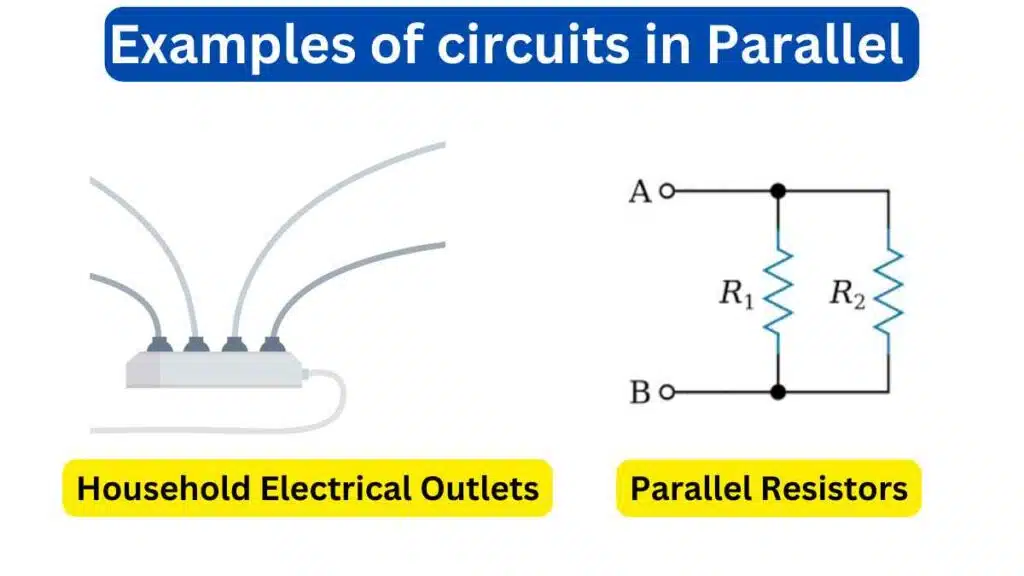10 Examples of Circuits in Parallel
Circuits in parallel are configurations where components are connected to the same voltage source with multiple paths for current to flow independently. Household Electrical Outlets are a common example of circuits in parallel.
Examples of circuits in parallel
Here are ten examples of circuits in parallel.

1. Household Electrical Outlets
In your home, multiple electrical outlets are wired in parallel. Each outlet provides a separate path for electrical devices to be connected.
2. Holiday Lights
Strings of holiday lights often have bulbs connected in parallel. If one bulb burns out, the others stay lit because they have their own separate circuits.
3. Home Lighting
In a room, multiple light fixtures are typically wired in parallel. You can turn individual lights on or off without affecting the others.
4. Parallel Batteries
In some applications, multiple batteries are connected in parallel to increase the total capacity (ampere-hours) while maintaining the same voltage.
5. Parallel Solar Panels
Solar panels on rooftops are often wired in parallel to combine their current outputs while maintaining the same voltage.
6. Parallel Capacitors
In electronic circuits, capacitors can be connected in parallel to increase the total capacitance. Each capacitor provides an independent storage of electrical energy.
7. Parallel Inductors
Inductors connected in parallel are used to reduce the total inductance in electronic circuits while keeping the same current flowing through them.
8. Parallel Switches
In lighting circuits, multiple switches can be connected in parallel so that any one of them can control the same light or group of lights.
9. Parallel Resistors
In electronic circuits, resistors connected in parallel are used to reduce the total resistance between two points, providing multiple paths for current.
10. Parallel Speakers
In audio systems, multiple speakers can be connected in parallel to the same amplifier to share the same audio signal while maintaining their individual sound output.
Circuits in parallel offer the advantage of independent operation of components and the ability to maintain a consistent voltage across each component. This makes them suitable for a wide range of applications, from home electrical systems to electronic circuits and beyond.







Leave a Reply